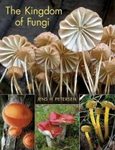By
Tom
30 Mar 2025
Written for Flexibound
Let me review this book from the eyes of a birder with general interest in nature, the subtitle of the book being
A Field Guide for Birders, Naturalists and Ecologists.
It’s a handy book with a beautiful cover, both from the paper material used and the cover illustration. As an experienced birder you normally skip the introduction of any new identification guide on birds, knowing you will not really learn something new in that section. You should not do it with this book as you will learn already quite interesting stuff on the first 3 pages. You will even find some similarities to the birding world, such as there are several lists of ecosystems of the world. Some including wildlife as does the HotW
Habitats of the World, none being really easy to use for birders. So, the authors had to take their own decisions as what they consider as distinct habitats, distinct for non-professional ecologists, birders and naturalists with only basic knowledge of geology, climate and botany. Two main criteria were retained: their visual distinctiveness with species of vegetation present, e.g. grass versus trees, that even the most narrow-sighted birder will recognize and their assemblage of wildlife, primarily mammals and birds. Spoiler alert, it’s working very well!
The area covered is all continental Africa from the pine forest of Morocco to the fynbos of South Africa, Madagascar and all the islands of Macaronesia, Gulf of Guinea islands, the remote islands off the South Atlantic and all the western Indian Ocean islands.
Before entering the chapters of the book, you have to study just 5 more pages of the introduction about canopy leaf types (just look at the nice figure), climate descriptions (3 letters easily explained in the Köppen climate paragraph) and very nice and easy to understand climate graphs.
And here we go to the first larger chapter called ‘Regional Introductions’ for NE Africa, East Africa, Central and North-Central Africa, Indian Ocean, Greater Southern Africa, N Africa and W Africa with beautiful coloured maps of the habitats and a list including the 3-letter code explained in the introduction.
Next you will get to the core of the book with the 13 categories of habitats described by the authors, naming just a few like Conifers, Deserts and arid lands, Savannas or Anthropogenic habitat and their different sub-habitats.
Every single habitat is introduced by a map, a climate diagram, and a beautiful b&w illustration showing the vegetation and including a human for scale. The habitat is then described in a way that even a birder will understand, including numerous very high-quality photographs of the habitat, mammals and birds present and characteristics of the place with a special chapter explaining why these species of mammals and birds are present.
Not to forget the numerous sidebars presenting great information about various topics.
But why is this book so interesting for birders. Let me explain with one single example, the distribution of Eastern Chanting-Goshawk. So, you travel to Tanzania, maybe even the first time, and you want to know where you will see the Eastern and where the Dark Chanting-Goshawk. First look will obviously be in your field guide studying the tiny maps, and when back home you may have noticed that even the most recent map for Eastern Chanting-Goshawk is completely wrong for Tanzania even though an almost perfect distribution map could be found at the Tanzania Bird Atlas website. But as an owner of the
Habitats of Africa you simply have a look at either page 37 at the East Africa chapter or at page 227 in the Savannas chapter, and knowing that Eastern Chanting-Goshawk is a Northern Dry Thorn Savanna bird, you will have a perfect map of distribution of this habitat and its species in Tanzania. The habitat as defined by the authors is clearly working!
And this is true for hundreds of bird species throughout Africa, be it for Miombo or any other habitat specialists.
Thus, this book is perfect for planning your trip, learning much more than you will ever get out of a field guide, putting your observations in a broader ecological context and by the sheer fact that you will start to understand African biogeography in birds and mammals, your trip will be even more fun.
Is it a field guide too? Yes, once on location, you will have plenty of time spending your evenings with a cold beer, a bird guide and the habitats guide to have a broader view of the African natural wonders.
What else makes the book so appealing: a wealth of information not readily available elsewhere, written for birders and naturalists, explained by first class diagrams and maps and filled with hundreds of first-class (!) photographs.
So, from my point of view as a keen birder interested both in African birds and mammals, this is essential lecture to prepare a trip and to understand distribution of the avifauna of Africa. It will be even more fun with complimentary knowledge about a topic not readily available for birders until now. Every serious birder needs this book!





























![Biomas Brasileiros [Brazil's Biomes]](http://mediacdn.nhbs.com/jackets/jackets_resizer_medium/23/234100.jpg?height=150&width=104)






















